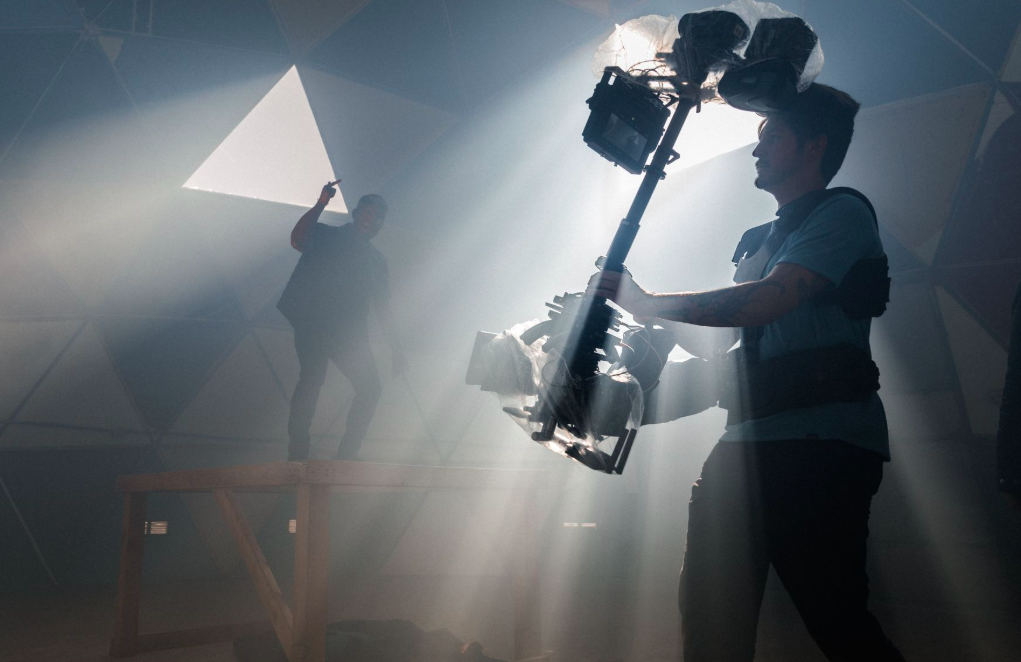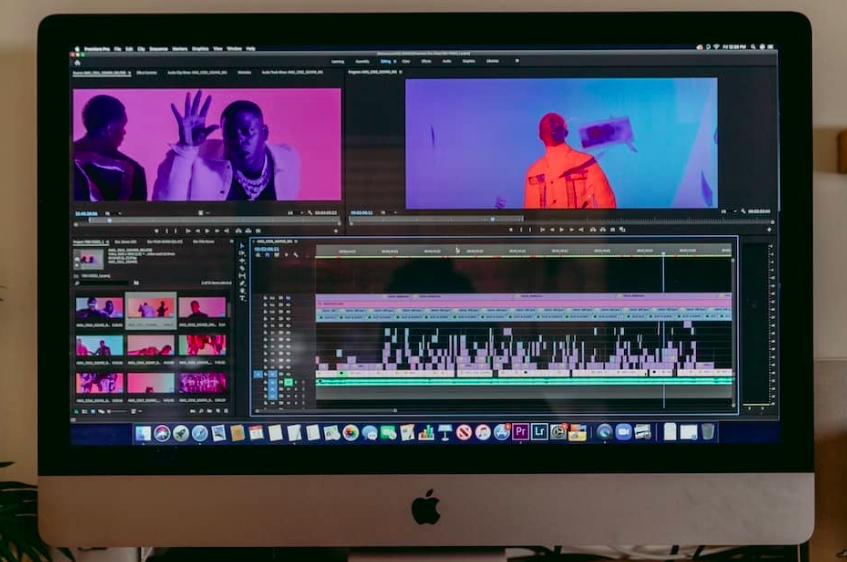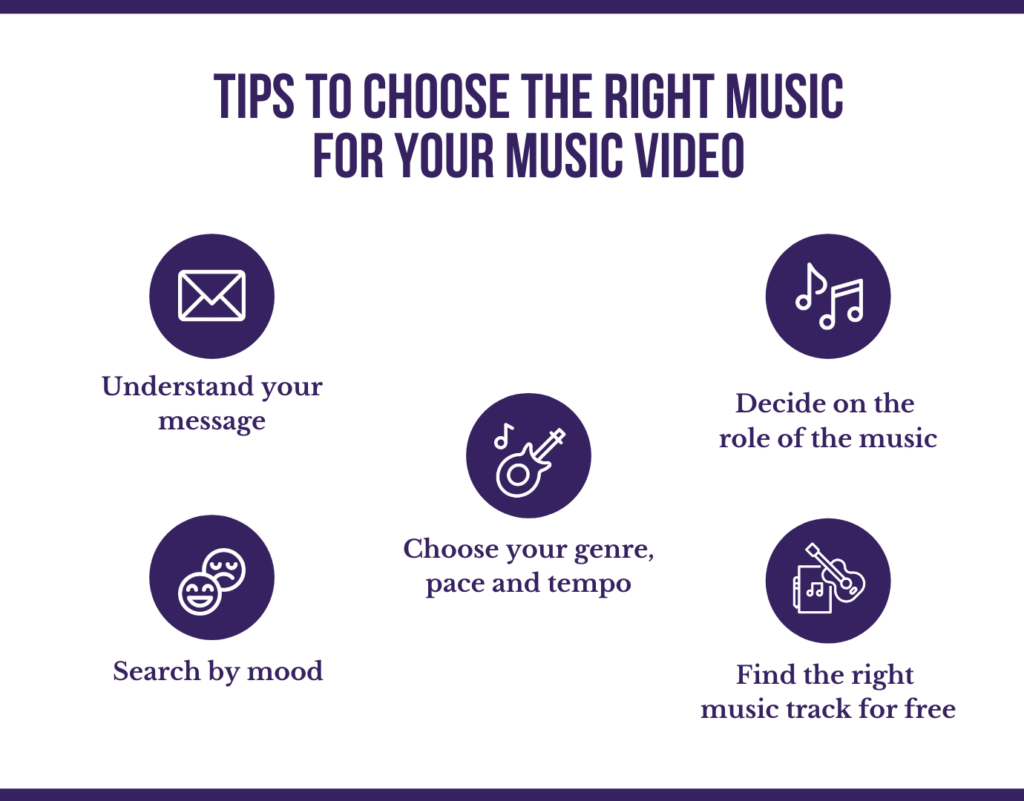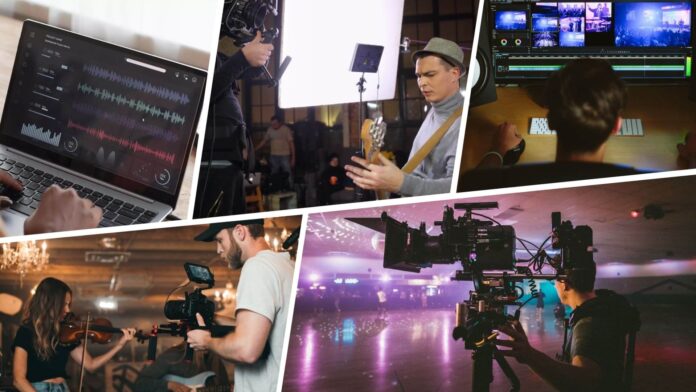In today’s digital world, a music videographer plays an important role because music is no longer just something we hear it. It is also something we see. It is more than just recording an artist or filming a concert it’s about turning emotion, rhythm and storytelling into powerful visual experiences.
For example, we watch performance videos on YouTube, short stories on Instagram and fun TikTok clips that match the beat of the song. As a result, visuals have become a big part of how we enjoy music. Because of this, a creative and technical field called music videography has started to grow. By combining vision with music, you can become a Professional Music videographer and start shooting music videos.
Music Videographer Job roles, Skills, Career tips

Music videography is the art of creating videos that go along with music or musical performances. It’s more than just recording a concert or showing a singer on stage. Instead, it mixes storytelling, mood, editing, lighting, effects and camera movement to match or enhance the feeling of the music.
First, it involves syncing the video with the audio this could be a studio track or a live performance. Then, the videographer makes creative choices, such as choosing the right camera angles, lighting styles, color tones and editing pace to reflect the emotion of the music video. Sometimes, the video tells a clear story, while other times it focuses more on visuals, performance or abstract ideas.
Overall, music videography brings together filmmaking and music, meaning you need to understand both visual storytelling and the rhythm and emotion of sound.
How to become a Music Videographer?
A music videographer is the person who makes videos that go along with songs. First, they talk with the musician or band to understand what kind of video fits the song and the artist’s style. For example, if the song is happy and energetic, the video might have bright colors and fast camera movements. But if the song is slow and emotional, the video could have soft lighting and calm scenes.
During filming, the videographer uses cameras, lighting, and different angles to make the video look interesting. For instance, they might use close up shots or start with dramatic monologue to show the singer’s emotions or wide shots to capture a dance group. They also choose how the camera moves sometimes steady for calm parts or shaking for exciting moments.
After filming, the videographer edits the video by cutting clips to match the rhythm of the music. They add effects like color changes or slow motion to make scenes feel more dramatic or fun. Finally, they show the video to the artist and make changes if needed to make sure the video tells the right story or mood. They combines creative ideas with technical skills like shooting and editing to create videos that help people feel and understand the song better.
Music Videographer essentials: 10 Steps to shoot Music video

To succeed in music videography, one must hone both technical and artistic skills. This dynamic field requires a balance of creativity and precision. Below are the essential skill areas, along with explanations and tips on how to develop them.
1) Visual Storytelling and Creative Vision
Visual storytelling is about using pictures and scenes to tell a story without words. First, you need a beat sheet and creative vision, which means having a clear idea of what you want the video to feel like or say. Then, you use colors, lighting, and camera angles to bring that idea to life. Also, it’s important to think about how each shot connects to the music and the emotions it creates.
When done well, visual storytelling helps people feel the song in a deeper way. So, having a strong creative vision and telling the story through images are key to making a great music video.
2) Editing, Color Grading and Post‑Production
After filming a music video, the next important step is editing and post-production using Colour grading tools. First, editing means cutting and arranging the video clips to match the rhythm and mood of the song. This helps the video feel smooth and exciting. Then, color grading is used to change the colors and lighting in the video to make it look more professional and fit the mood better.
For example, warmer colors can make a scene feel happy while cooler colors can make it feel sad or mysterious. Finally, post-production includes adding special effects, titles or fixing any mistakes in the video. All these steps help turn raw footage into a polished music video that looks great and tells the story clearly.
3) Technical Camera and Gear Knowledge
To make great music videos, a videographer needs to know how to use cameras and other gear well. First, they learn about different camera settings like focus, exposure and frame rate, which affect how the video looks. Then, they choose the right lenses and equipment, such as tripods, gimbals, or lights, to help create the right mood and smooth shots.
It’s also important to understand how to set up and use lighting gear to make the video bright or dark as needed. Knowing how to handle all this equipment helps the videographer capture the best possible video and bring their creative ideas to life.
4) Audio and Syncing Skills
Even though music videographers mainly focus on video, understanding audio and syncing is very important. First, they need to make sure the video matches the song perfectly, so the visuals and music feel connected. This means carefully syncing the singer’s lip movements or instrument playing with the sound.
Sometimes, they also record extra sounds on set like footsteps or crowd noise, which need to be added in post-production. Knowing how to work with audio helps the video feel natural and professional, making the whole experience better for viewers.
5) Music, Rhythm and Timing
To make a great music video, it’s important to understand the music itself. First, knowing the rhythm and timing of the song helps a videographer choose when to cut from one shot to another. For example, quick cuts work well with fast beats, while slow, smooth transitions fit slower songs.
Also, understanding the mood of the music helps decide the style of the video, like using bright colors for happy songs or dark tones for sad ones. By matching the video’s flow to the music’s rhythm and feeling, the video becomes more exciting and easier for viewers to enjoy.
6) Strong Creative Relationships and Collaboration
In music videography, soft skills like communication and collaboration are very important. First, a videographer needs to talk clearly with the artist, conduct rehearsals for actors, crew and other team members to make sure everyone understands the vision for the video. Listening carefully to others ideas helps create a better final product.
Also, working well with different people and being open to feedback makes the whole process smoother and more enjoyable. By practicing good communication and teamwork, a videographer can build strong relationships and make better music videos.
7) Adaptability and Problem Solving
Things don’t always go as planned, so being adaptable is very important. First, sometimes equipment can break or the weather can change and a good videographer needs to quickly find new solutions. Also, creative problems can happen, like when a shot doesn’t look right or the lighting is not perfect. Being flexible and thinking fast helps keep the shoot on track. By practicing problem solving and staying calm under pressure, a videographer can handle challenges and still make a great video.
8) Capturing Every Moment Carefully
Capturing every moment carefully is very important. Musicians move quickly on stage, and special expressions or actions can happen in an instant. First, a good photographer pays close attention to these small but powerful moments to make sure they don’t miss them. They also check the camera settings like focus and lighting to get clear, sharp pictures. By being patient and watching closely, a music photographer can take photos that truly show the energy and emotion of the performance.
9) Business and Marketing Skills
Besides making great videos or photos, a music videographer or photographer also needs business and marketing skills. First, they must know how to promote their work so that artists and clients can find them. This includes using social media, creating a website, and networking with people in the music industry.
10) Monetisation or Getting paid
Next, understanding how to manage money like setting prices and budgeting for projects, helps keep the business running smoothly. Finally, good customer service and building strong relationships with clients encourage repeat work and positive referrals. You can also shoot your own music videos and monetise from Youtube. By learning these skills, a creative professional can grow their career and succeed in the music world.
How to find Music Videographer Jobs nearby for Beginners

Finding music photography jobs near you can be easier with the right approach. Here are some simple steps to help you get started:
- Use Online Job Platforms: Check websites like Indeed, Glassdoor, or LinkedIn. Search for “music photographer” or “concert photographer” along with your city or region.
- Social Media: Follow local musicians, bands, music venues, and event promoters on Instagram, Facebook, or Twitter. Many post calls for photographers or share gigs.
- Local Music Venues and Clubs: Visit nearby concert halls, clubs, or festivals and ask if they need photographers. Sometimes, just showing interest can open doors.
- Network with Musicians and Bands: Connect with local artists who might need photos for their albums, social media, or press. Attend local shows and introduce yourself.
- Join Photography or Music Groups: Look for local photography clubs or music industry groups on Facebook or Meetup. Networking in these groups can lead to job opportunities.
- Create an Online Portfolio: Make a website or Instagram page showcasing your best music photos. Share this with potential clients to show your style and skills.
Is Music Videographer a good career?
Becoming a music videographer takes time, practice and passion. First, you need to learn the basics of cameras, editing, and storytelling. Then, as you gain experience, you can improve your creative style and work with artists to bring their music to life. Building strong communication skills, being flexible and paying attention to detail also help you grow in this field.
Most importantly, keep learning, stay creative and never stop shooting. With dedication and a strong portfolio, you can turn your love for music and video into a successful career. With time, you can move from hobby projects to paid work, find your style and make your mark.

